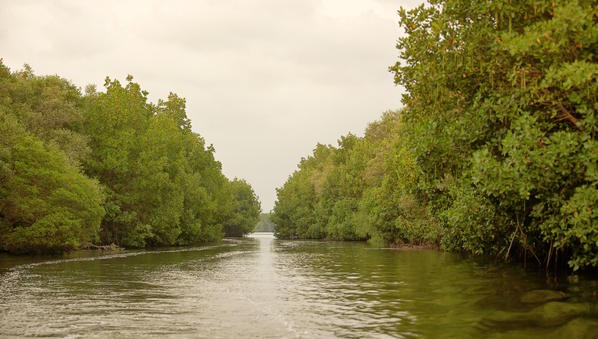
Sri Lankan mangroves respond to conservation plan
Speed read
- The 2004 Asian Tsunami brought home the protective value of Sri Lanka’s mangrove forests
- Mangroves were once being cut down to make way for large-scale shrimp farming — which failed
- A revival begun a year ago has resulted in the revival of about 18,000 hectares of mangroves
A year after Sri Lanka launched a mangrove conservation plan with funds from a U.S. conservation group about half of its 37,000 hectares of mangrove forests are in a various stage of revival, officials say.
With US$ 3.4 million from the Califronia-based Seacology and manpower and other support from the Sri Lankan government, some 283 community organisations have been engaged in the work of conserving and replanting mangrove forests. The national conservation body, Small Fisheries Foundation, is the local implementing partner.
Over the next four years 1,500 community groups will be looking after existing mangroves and also replanting an additional 3,000 hectares. Adding to the efforts, the Sri Lanka Navy has deployed its personnel to help with the planting of over 36,000 mangrove trees.
“Nations within and without the region are taking notice of the Sri Lanka mangrove conservation programme,” Seacology executive director Duane Silverstein tells SciDev.Net.
In July, Sri Lankan President Maithripala Sirisena opened the island’s first mangrove museum in the north-western Chilaw district. The museum expects to attract 20,000 visitors per year.
“There was a time when mangroves were cut for everything from firewood to clearing land for shrimp farms,” Douglas Thisera, director of conservation at the Small Fishers Federation of Sri Lanka, says.
Thisera has been working on conservation for over two decades, from a time when mangroves were actually being cleared with state patronage. Starting from the late 1980s successive governments allowed large businesses to clear mangroves to set up shrimp farms.
What saved the mangroves was the failure of shrimp farming through infections. But, by then, over 40 per cent of mangroves along the north-western coast were destroyed.
The value of mangroves in protection shores was brought home when the December 2004 Asian Tsunami smashed into Sri Lanka’s eastern coast. Mangroves are now protected areas and cutting them down is punishable by law.
Thisera said that the most important component of the programme is community participation. “The community has to value the mangroves, otherwise, they will simply use them for anything they see fit.”
This piece was produced by SciDev.Net’s South Asia desk.
Source: 19/08/2016 :SciDev.Net’s South Asia : http://www.scidev.net/south-asia/conservation/news/sri-lankan-mangroves-respond-to-conservation-plan.html




